
Digital Marketing Blogs
"Let's Learn, Explore, and Connect to the World"

Instagram Insights and Analytics: Understanding Your Audience and Measuring
- Jenelie Hijosa
- Digital Marketing (Digital Business)

Introduction

However, navigating this vast sea of potential customers requires more than just compelling content and strategic posting; it demands a deep understanding of the audience and the effectiveness of marketing efforts. This is where Instagram Insights and Analytics come as a key, serving as the compass that provides guidance to businesses through the complex world of social media marketing.
The importance of Instagram Insights for businesses and marketers cannot be overstated. These powerful analytical tools provide a window into the behaviors, preferences, and demographics of an account’s followers, offering critical data that can shape marketing strategies. With insights into metrics such as engagement rates, reach, impressions, and more, marketers can fine-tune their content, optimize posting schedules, and enhance their targeting in order to make sure that their messages resonate with the intended audience.
Instagram analytics encompasses a wide range of data points. From understanding who your followers are, including their age, gender, and location, to gauging how individual posts and stories perform, analytics paint a detailed picture of your social media landscape. This information is crucial for assessing the health of your Instagram account, identifying trends, and measuring the success of marketing campaigns. Moreover, it empowers businesses to make data-driven decisions, ultimately leading to improved engagement, increased follower growth, and a firmer brand presence on the platform.
By delving into the capabilities and applications of Instagram Insights and Analytics, this introduction sets the stage for a comprehensive exploration of how businesses can leverage these tools to understand their audience better and measure campaign success. The journey through Instagram’s analytical offerings reveals the blueprint for crafting a social media strategy that not only engages but also converts, driving business success in today’s digital age.
Instagram Insights provides a goldmine of data for businesses and marketers, offering a lens through which the effectiveness of social media strategies can be evaluated and refined. This section dives into the intricacies of Instagram Insights, detailing what it offers, who can access it, and an explanation of its key metrics.
Overview of Instagram Insights: What It Offers and Who Can Access It
 Instagram Insights is an analytics tool embedded within the Instagram platform, designed to offer users detailed information about their content’s performance and their audience’s behaviors and preferences. Accessible only to those with a Business or Creator account, Insights equips marketers with the data needed to understand how their audience interacts with their content. This tool is pivotal for anyone looking to optimize their Instagram strategy, as it provides actionable metrics not just on a surface level but also offers deep dives into content, audience, and activity metrics.
Instagram Insights is an analytics tool embedded within the Instagram platform, designed to offer users detailed information about their content’s performance and their audience’s behaviors and preferences. Accessible only to those with a Business or Creator account, Insights equips marketers with the data needed to understand how their audience interacts with their content. This tool is pivotal for anyone looking to optimize their Instagram strategy, as it provides actionable metrics not just on a surface level but also offers deep dives into content, audience, and activity metrics.
Key Metrics Explained

Engagement: This metric measures how actively involved your audience is with your content, including likes, comments, shares, and saves. High engagement rates often indicate content that resonates well with your audience, signaling to the Instagram algorithm that your content is worth promoting.

Reach and Impressions: While often confused, these metrics offer distinct insights. Reach quantifies the unique number of users who have seen your post, whereas impressions count the total number of times your post has been viewed. Together, these metrics help understand the spread and frequency of content consumption.

Follower Demographics: Insights into your followers’ age ranges, genders, locations, and active hours/days are invaluable for tailoring content and posting schedules to match your audience’s profile. This demographic data aids in fine-tuning targeting strategies for both organic content and paid advertisements.

Content Performance: Instagram Insights breaks down the performance of posts, stories, and IGTV videos, providing data on engagement, reach, and more for individual pieces of content. This metric is crucial for identifying what types of content perform best and should be prioritized in content planning.

Activity Metrics: This includes data on how users engage with your profile, such as profile visits, website clicks, and call-to-action button clicks. Activity metrics are a strong indicator of the conversion efficacy of your Instagram account, illustrating how well your content drives action.

Story Insights: Given the ephemeral nature of stories, understanding their performance is key. Insights provide metrics on reach, impressions, and interactions, such as replies and swipes, helping to gauge the narrative’s engagement and effectiveness.
By leveraging these metrics, businesses and marketers can gain a comprehensive understanding of their Instagram performance. This understanding enables the crafting of more engaging content, better alignment with audience preferences, and an overall more effective Instagram strategy. Instagram Insights thus acts not just as a report card of past performance but as a strategic guide for future actions, empowering users to continually refine their approach based on solid, data-driven insights.
Delving into audience analytics on Instagram provides businesses and marketers with invaluable insights, enabling them to tailor their content strategies effectively and foster deeper connections with their followers. This deep dive into audience demographics and behaviors sheds light on the significance of understanding who your audience is and how they interact with the platform.
Analyzing Audience Demographics
Age and Gender: Having a grasp of the age range as well as the gender distribution of your audience is pivotal. This demographic data helps in crafting messages and content that resonate on a more personal level with your target demographic. For instance, a brand whose products are targeted toward women in their 20s and 30s will tailor its content differently than one aiming for a male audience in their 40s and 50s. By aligning content with the demographic makeup of your audience, you enhance relevance and engagement.
Location: Knowing where your audience is located is not just about geography; it’s about context. Location data can influence everything from the timing of your posts to ensure maximum visibility, to the cultural nuances and languages your content might need to address. A global brand might discover significant followings in unexpected locales, prompting a more localized or regionalized approach to certain markets.
Understanding Audience Behavior
Active Hours and Days: Instagram Insights gives data on when your followers are most active on the platform. This information is crucial for optimizing your posting schedule to ensure that your content has the greatest chance of being seen and interacted with. Posting during peak activity times means your content is more likely to top the feed of your followers, thereby increasing engagement rates.
Content Interaction Patterns: Beyond just knowing when your audience is online, understanding how they interact with different types of content can guide your content strategy. For example, are your instructional videos getting more engagement during weekdays, suggesting a professional interest, while lifestyle posts perform better on weekends? Such patterns can help refine what content you post and when.
Leveraging Insights for Strategic Planning
 Armed with detailed demographic and behavioral insights, businesses can make informed decisions to tailor their social media strategies. For instance, if analytics reveal a strong following in a non-English speaking country, incorporating posts in that country’s language could significantly boost engagement. Similarly, if data shows a spike in activity during evening hours, scheduling posts to go live during these times can increase visibility and interaction.
Armed with detailed demographic and behavioral insights, businesses can make informed decisions to tailor their social media strategies. For instance, if analytics reveal a strong following in a non-English speaking country, incorporating posts in that country’s language could significantly boost engagement. Similarly, if data shows a spike in activity during evening hours, scheduling posts to go live during these times can increase visibility and interaction.
The Outcome
 Understanding your Instagram audience through these analytics goes beyond mere numbers. It’s about gaining a deep understanding of the people behind the statistics – their preferences, behaviors, and how they interact with your brand on Instagram. This knowledge is instrumental in creating a content strategy that not only reaches but resonates with your audience, driving engagement and fostering a loyal community around your brand.
Understanding your Instagram audience through these analytics goes beyond mere numbers. It’s about gaining a deep understanding of the people behind the statistics – their preferences, behaviors, and how they interact with your brand on Instagram. This knowledge is instrumental in creating a content strategy that not only reaches but resonates with your audience, driving engagement and fostering a loyal community around your brand.
By leveraging audience analytics effectively, businesses can ensure their Instagram presence is not just seen but is impactful, creating meaningful engagements that translate into tangible business outcomes. This strategic approach, informed by deep insights into audience demographics and behavior, paves the way for a more personalized, effective, and successful social media strategy.
 Measuring the success of an Instagram campaign is a nuanced process that hinges on clearly defined objectives and the strategic alignment of these goals with measurable metrics. This essential step ensures that efforts are not just cast into the digital void but are impactful and trackable, guiding future strategies and optimizations. Let’s explore how to define campaign objectives, align them with measurable metrics, and analyze performance effectively.
Measuring the success of an Instagram campaign is a nuanced process that hinges on clearly defined objectives and the strategic alignment of these goals with measurable metrics. This essential step ensures that efforts are not just cast into the digital void but are impactful and trackable, guiding future strategies and optimizations. Let’s explore how to define campaign objectives, align them with measurable metrics, and analyze performance effectively.
This functionality transforms traditional Instagram posts into a dynamic catalog of shoppable items, bridging the gap between browsing and buying. It’s designed to cater to the impulse buying behavior often seen in social media users, by reducing the steps required to go from interest to action. For businesses, this means a greater opportunity to convert views and likes into tangible sales, with minimal friction for the customer.
Defining Campaign Objectives
The first step in any successful Instagram campaign is to define your objectives. Goals can be about anything from getting more people to know your brand to driving them to your website or making a sale. The clarity of these objectives is crucial, as it directs the choice of metrics you will use to measure success. For instance, if the goal is to enhance brand awareness, metrics like reach and impressions take precedence. On the other hand, a campaign aimed at driving sales would focus on conversion rates and click-through rates to the website.
Aligning Objectives with Measurable Metrics
Once objectives are clearly defined, aligning them with measurable metrics is the next critical step. This alignment ensures that every goal has a corresponding metric that can provide insights into the campaign’s performance.
- For Brand Awareness: Look at reach, impressions, and follower growth. These metrics indicate how widely your content is being seen and whether it’s attracting new followers to your brand.
- For Engagement: Focus on likes, comments, shares, and saves. High engagement rates suggest that your content resonates well with your audience, fostering a sense of community and brand loyalty.
- For Driving Traffic: Pay attention to click-through rates (CTRs) on your bio link or specific campaign URLs tracked via UTM parameters. Monitoring website visits originating from Instagram provides direct insights into the effectiveness of your call-to-action prompts.
- For Conversions: Conversion rate is key. This might involve tracking specific actions taken on your website, such as sign-ups or sales, attributed to Instagram users through analytics platforms or Instagram’s own shopping features.
Analyzing Performance

Analyzing the performance of an Instagram campaign requires a focused approach, concentrating on the metrics most relevant to your objectives. This analysis involves not just looking at the numbers but understanding the story they tell.
- Benchmarking: Compare current campaign performance against past campaigns to identify trends, improvements, or areas needing attention.
- Contextual Analysis: Consider external factors that might influence your metrics, such as seasonality, global events, or changes in Instagram’s algorithm, to gauge true performance.
- Qualitative Insights: Beyond quantitative data, consider qualitative insights from comments and direct messages that can provide deeper context to the numerical data.
This analytical process allows businesses to enter a feedback loop of continuous improvement on Instagram. By tracking results and understanding what resonates with your audience, you can refine your content strategy, targeting, and messaging with each campaign. This iterative approach ensures your content gets better at achieving your objectives over time.
In essence, measuring campaign success starts with setting clear, actionable goals. Then, meticulously track the metrics that directly tie back to those goals. For example, if you want to boost brand awareness, track metrics like reach and impressions. If driving website traffic is your aim, focus on link clicks and website visits. Through this rigorous analysis, you’ll glean valuable insights. These insights not only measure the immediate impact of your campaigns but also inform future strategies.
By continuously learning and adapting, you’ll ensure long-term success in your Instagram marketing endeavors. Always bear in mind that constant improvement of posts is needed, and understanding Instagram’s metrics and insights is one of the keys to this continuous improvement.
References
- https://www.requesttrackerpro.com/customer-journey-maps-for-better-customer-experience/
- Storm5 – The Future of Retail Media in 2023. https://storm5.com/resources/news/retailtech-news/the-future-of-retail-media-in-2023/
- The Power of Hashtags on Instagram | Stay at Lab. https://stayatlab.com/22875-the-power-of-hashtags-on-instagram-35/
- What is The Best Time to Post on Instagram 2023 – Latest tech News,Specifications, Review, Opinions and Videos. https://www.91smarttech.com/what-is-the-best-time-to-post-on-instagram-2023
Latest Blogs
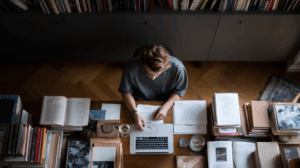
Present Perfect Continuous 6
English Blogs “Let’s Learn, Explore, and Connect to the World” Present Perfect Continuous 6 VI. Expanding Your Practice with the Present Perfect Continuous To master
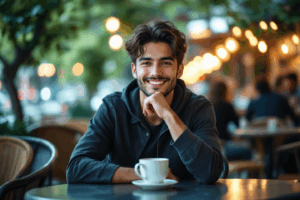
Past Perfect Tense 6
English Blogs “Let’s Learn, Explore, and Connect to the World” Past Perfect Tense 6 VI. Expanding Your Practice with the Past Perfect Tense Mastering the
Reading comprehension quiz
A Beginner's Guide to Video Editing: Be a Pro in Just 24 Hours
Discover your inner editing abilities with this complete guide made for beginners to master the art of video editing smoothly. ‘A Beginner’s Guide to Video Editing: Be a Pro in Just 24 Hours’ is your way to discover the secrets of professional-grade editing within a day.
Check out our Blogs!
Read our everyday blogs and gain new knowledge, skills, and inspiration to support your learning journey here in SEKAEL.


Explore Mental Health Blogs to gain insights and tips on self-care, emotional balance, and personal well-being.
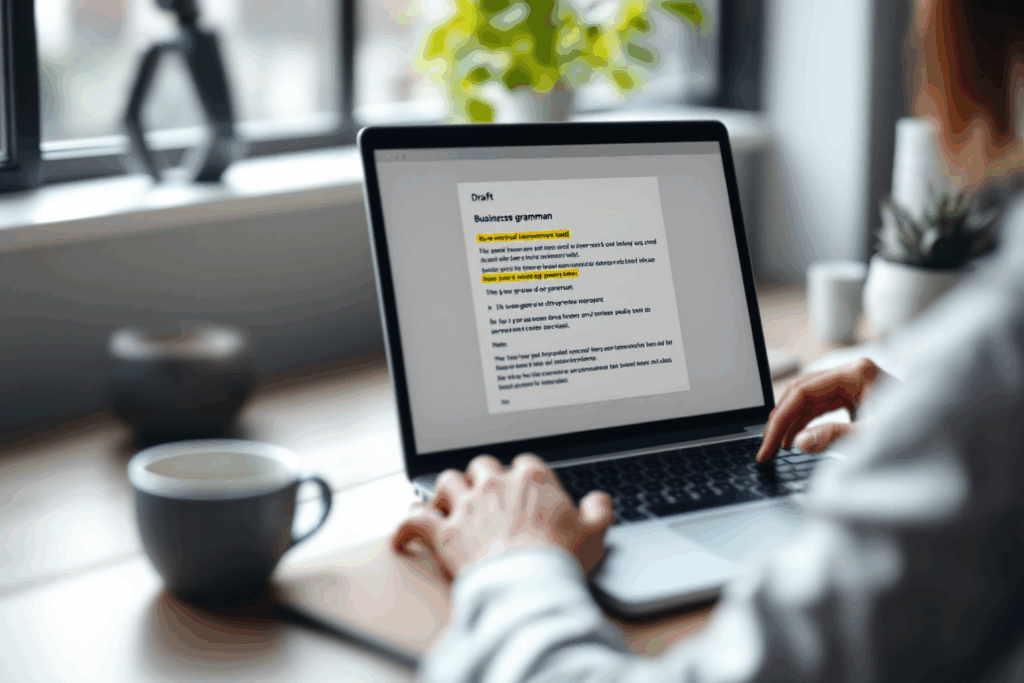


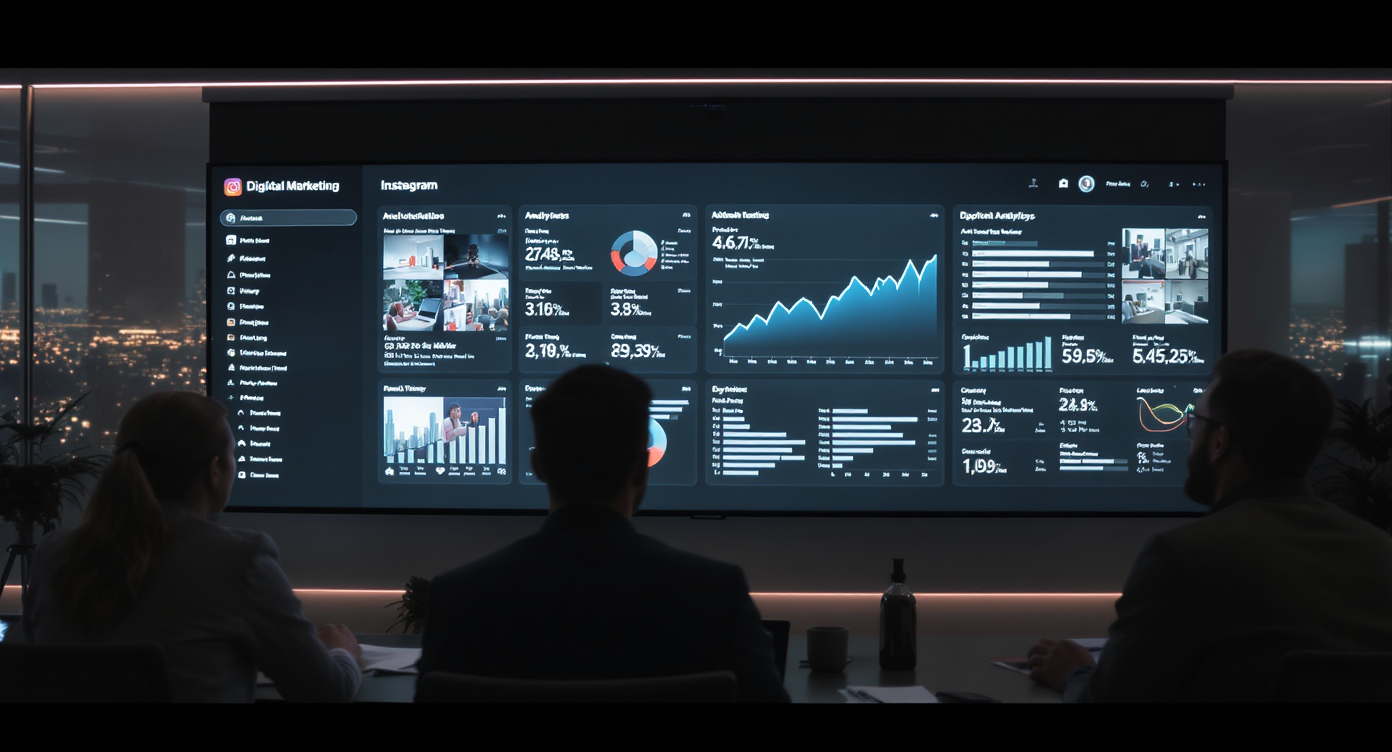



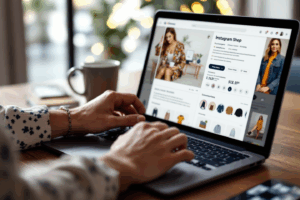 The online world has undergone significant changes in this era of digital technology. The online marketing space is rapidly changing with social media platforms emerging as powerful conduits for engaging potential customers and driving sales. Among these platforms, Instagram stands out as a prime channel for brands looking to expand their digital footprint and directly connect with their target audience. With its visually rich format and a global with more than a billion users, Instagram has transcended its original purpose as a photo-sharing app, morphing into a vibrant marketplace where businesses, from startups to established brands, can showcase their products and services through dynamic and interactive content. Instagram has also added instagram shopping.
The online world has undergone significant changes in this era of digital technology. The online marketing space is rapidly changing with social media platforms emerging as powerful conduits for engaging potential customers and driving sales. Among these platforms, Instagram stands out as a prime channel for brands looking to expand their digital footprint and directly connect with their target audience. With its visually rich format and a global with more than a billion users, Instagram has transcended its original purpose as a photo-sharing app, morphing into a vibrant marketplace where businesses, from startups to established brands, can showcase their products and services through dynamic and interactive content. Instagram has also added instagram shopping.  Central to Instagram’s emergence as a leading e-commerce platform are Shoppable Posts and Instagram Shopping; these innovative features that have revolutionized the way consumers discover and purchase products online. With Shoppable Posts, businesses can add product tags to their photos and videos, creating a seamless and intuitive shopping experience right within the Instagram interface. Meanwhile, Instagram Shopping extends this functionality by enabling brands to create a customizable digital storefront, making it easier than ever for users to browse and buy without ever leaving the app.
Central to Instagram’s emergence as a leading e-commerce platform are Shoppable Posts and Instagram Shopping; these innovative features that have revolutionized the way consumers discover and purchase products online. With Shoppable Posts, businesses can add product tags to their photos and videos, creating a seamless and intuitive shopping experience right within the Instagram interface. Meanwhile, Instagram Shopping extends this functionality by enabling brands to create a customizable digital storefront, making it easier than ever for users to browse and buy without ever leaving the app. Once just a place to share photos, Instagram has completely changed, becoming a major player in online shopping and reshaping how we buy things online.This evolution is a testament to Instagram’s commitment to innovation, responding to the changing needs of its users and the market dynamics. Today, Instagram Shopping stands at the forefront of social commerce, providing businesses with unprecedented opportunities to engage with their customers and drive sales directly from the platform.
Once just a place to share photos, Instagram has completely changed, becoming a major player in online shopping and reshaping how we buy things online.This evolution is a testament to Instagram’s commitment to innovation, responding to the changing needs of its users and the market dynamics. Today, Instagram Shopping stands at the forefront of social commerce, providing businesses with unprecedented opportunities to engage with their customers and drive sales directly from the platform. Instagram’s journey towards becoming an e-commerce powerhouse began with the introduction of business profiles in 2016, followed by the launch of shoppable posts in 2017. These pivotal updates opened new avenues for brands to interact with their audience, transforming passive scrolling into active shopping experiences. By enabling users to purchase products directly through posts and stories, by seamlessly blending social connection with shopping features, Instagram has fostered a unique space where cohesive ecosystem where discovery and purchase go hand in hand.
Instagram’s journey towards becoming an e-commerce powerhouse began with the introduction of business profiles in 2016, followed by the launch of shoppable posts in 2017. These pivotal updates opened new avenues for brands to interact with their audience, transforming passive scrolling into active shopping experiences. By enabling users to purchase products directly through posts and stories, by seamlessly blending social connection with shopping features, Instagram has fostered a unique space where cohesive ecosystem where discovery and purchase go hand in hand. The impact of Instagram Shopping on consumer behavior is significant, with statistics revealing a growing preference for shopping within social media platforms. According to Instagram, 70% of shopping enthusiasts turn to the platform for product discovery, and 130 million users tap on shopping posts monthly to learn more about products. This trend underscores the platform’s role in influencing shopping decisions and highlights the importance of an optimized Instagram presence for businesses aiming to capture this engaged audience.
The impact of Instagram Shopping on consumer behavior is significant, with statistics revealing a growing preference for shopping within social media platforms. According to Instagram, 70% of shopping enthusiasts turn to the platform for product discovery, and 130 million users tap on shopping posts monthly to learn more about products. This trend underscores the platform’s role in influencing shopping decisions and highlights the importance of an optimized Instagram presence for businesses aiming to capture this engaged audience.
 In the digital marketplace, the ability to capture consumer interest at the moment of discovery is crucial. Instagram’s introduction of Shoppable Posts has revolutionized the path from product discovery to purchase, making it a seamless journey that keeps users engaged within the platform. This innovative feature is at the heart of Instagram’s shopping capabilities, offering a direct, intuitive, and visually appealing shopping experience that benefits both businesses and consumers.
In the digital marketplace, the ability to capture consumer interest at the moment of discovery is crucial. Instagram’s introduction of Shoppable Posts has revolutionized the path from product discovery to purchase, making it a seamless journey that keeps users engaged within the platform. This innovative feature is at the heart of Instagram’s shopping capabilities, offering a direct, intuitive, and visually appealing shopping experience that benefits both businesses and consumers. Shoppable Posts are Instagram posts that businesses can tag with products from their catalog. These tags appear on both posts and stories, allowing users to tap on a product to see more details, such as pricing and product descriptions, without ever leaving the Instagram app. A further tap takes the user directly to the business’s website or to Instagram Checkout (where available), where they can complete their purchase.
Shoppable Posts are Instagram posts that businesses can tag with products from their catalog. These tags appear on both posts and stories, allowing users to tap on a product to see more details, such as pricing and product descriptions, without ever leaving the Instagram app. A further tap takes the user directly to the business’s website or to Instagram Checkout (where available), where they can complete their purchase. Shoppable Posts have significantly altered the shopping experience on Instagram, making it a fluid journey from discovery to purchase. Users scrolling through their feeds or exploring hashtags can stumble upon products organically, marked by the distinctive shopping bag icon. This discovery process feels natural and integrated within the user’s social media experience, rather than an intrusive or disruptive ad.
Shoppable Posts have significantly altered the shopping experience on Instagram, making it a fluid journey from discovery to purchase. Users scrolling through their feeds or exploring hashtags can stumble upon products organically, marked by the distinctive shopping bag icon. This discovery process feels natural and integrated within the user’s social media experience, rather than an intrusive or disruptive ad.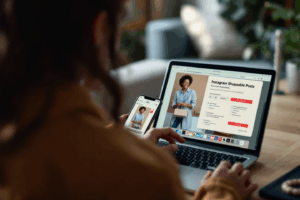

 Instagram Shop:
Instagram Shop:  Product Tags:
Product Tags: Collections:
Collections:  Shopping in Explore:
Shopping in Explore: 
 Instagram provides valuable analytics tools for businesses to track the performance of their shopping features. These insights can help you understand which products and content types are most effective, allowing for data-driven decisions to optimize your strategy.
Instagram provides valuable analytics tools for businesses to track the performance of their shopping features. These insights can help you understand which products and content types are most effective, allowing for data-driven decisions to optimize your strategy.
 The most engaging shoppable content does more than showcase a product; it tells a story. This narrative approach can significantly enhance the appeal of your offerings, making them more relatable and desirable to your audience. For instance, a lifestyle brand might use a series of posts to depict a day in the life of a person using their products, highlighting features and benefits in a natural, story-driven context. Videos, with their dynamic nature, are particularly effective for storytelling, allowing you to convey the personality and values behind your brand, alongside the practical aspects of your products.
The most engaging shoppable content does more than showcase a product; it tells a story. This narrative approach can significantly enhance the appeal of your offerings, making them more relatable and desirable to your audience. For instance, a lifestyle brand might use a series of posts to depict a day in the life of a person using their products, highlighting features and benefits in a natural, story-driven context. Videos, with their dynamic nature, are particularly effective for storytelling, allowing you to convey the personality and values behind your brand, alongside the practical aspects of your products.

 Implementing these creative strategies requires a keen understanding of your target customers or audience and a willingness to experiment with different content formats and engagement techniques. The goal is to create a rich, interactive shopping experience that goes beyond the transactional, fostering a strong connection between your brand and your customers.
Implementing these creative strategies requires a keen understanding of your target customers or audience and a willingness to experiment with different content formats and engagement techniques. The goal is to create a rich, interactive shopping experience that goes beyond the transactional, fostering a strong connection between your brand and your customers.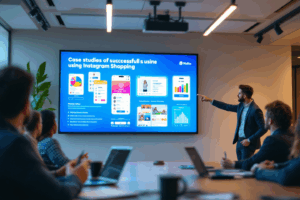 Examples of businesses thriving with Instagram Shopping show how powerful it can be for increasing sales. These case studies not only showcase the potential of Instagram as a sales channel but also offer valuable insights and strategies that can inspire others.
Examples of businesses thriving with Instagram Shopping show how powerful it can be for increasing sales. These case studies not only showcase the potential of Instagram as a sales channel but also offer valuable insights and strategies that can inspire others. One notable success story is that of
One notable success story is that of 
 Get ready for Instagram Shopping to take off! The future holds even more ways to shop that feel like they’re built just for you, driven by advancements in AI, AR, and machine learning technologies. Upcoming features are expected to include enhanced AR try-on capabilities, allowing users to visualize products more realistically, and personalized shopping recommendations powered by AI, tailoring product discoveries to individual preferences.
Get ready for Instagram Shopping to take off! The future holds even more ways to shop that feel like they’re built just for you, driven by advancements in AI, AR, and machine learning technologies. Upcoming features are expected to include enhanced AR try-on capabilities, allowing users to visualize products more realistically, and personalized shopping recommendations powered by AI, tailoring product discoveries to individual preferences. Businesses can prepare for this future by investing in high-quality visual content and exploring AR capabilities for their products. Staying abreast of platform updates and adapting strategies to leverage new features will be crucial. Additionally, cultivating a strong community around your brand will enhance customer loyalty and engagement, positioning your business to capitalize on the evolving landscape of social e-commerce.
Businesses can prepare for this future by investing in high-quality visual content and exploring AR capabilities for their products. Staying abreast of platform updates and adapting strategies to leverage new features will be crucial. Additionally, cultivating a strong community around your brand will enhance customer loyalty and engagement, positioning your business to capitalize on the evolving landscape of social e-commerce.








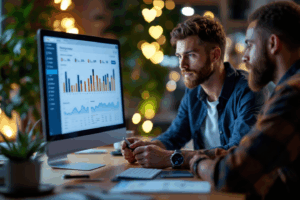 In the active world of digital marketing, influencer marketing has emerged as a powerhouse strategy, transforming the way brands connect with their audience. At its core, influencer marketing is about leveraging the reach and credibility of individuals who hold sway over a significant following on social media platforms, particularly Instagram. This strategy harnesses the power of personal recommendation, which has been a cornerstone of consumer trust for generations, adapted for the digital age.
In the active world of digital marketing, influencer marketing has emerged as a powerhouse strategy, transforming the way brands connect with their audience. At its core, influencer marketing is about leveraging the reach and credibility of individuals who hold sway over a significant following on social media platforms, particularly Instagram. This strategy harnesses the power of personal recommendation, which has been a cornerstone of consumer trust for generations, adapted for the digital age. Instagram, with over a billion active users, serves as the perfect stage for this form of marketing. Its visually driven platform allows for vivid storytelling and personal engagement, making it an ideal space for influencers to connect with their audience and showcase brand collaborations. The significance of Instagram in influencer marketing cannot be overstated; it’s where visual content thrives, where trends are set, and where brands can see substantial engagement and growth through strategic partnerships.
Instagram, with over a billion active users, serves as the perfect stage for this form of marketing. Its visually driven platform allows for vivid storytelling and personal engagement, making it an ideal space for influencers to connect with their audience and showcase brand collaborations. The significance of Instagram in influencer marketing cannot be overstated; it’s where visual content thrives, where trends are set, and where brands can see substantial engagement and growth through strategic partnerships. In today’s digital era, Instagram has risen not just as a social media platform but as a pivotal force in digital marketing. Its inception revolutionized the way brands approach marketing, moving beyond traditional mediums to embrace a more visual and interactive form of storytelling. This transformation is largely driven by Instagram’s inherent ability to facilitate a visual narrative, making it an invaluable tool for brands to connect with their audience on a personal and emotional level.
In today’s digital era, Instagram has risen not just as a social media platform but as a pivotal force in digital marketing. Its inception revolutionized the way brands approach marketing, moving beyond traditional mediums to embrace a more visual and interactive form of storytelling. This transformation is largely driven by Instagram’s inherent ability to facilitate a visual narrative, making it an invaluable tool for brands to connect with their audience on a personal and emotional level.  Instagram’s impact on digital marketing extends beyond mere aesthetics. It has fundamentally changed how brands strategize their online presence. In an age where consumer attention spans are fleeting, Instagram’s visual-first approach ensures that messages are not only seen but felt, leading to in-depth engagement and a firmer emotional connection with the audience. This shift towards visual storytelling has led brands to become more creative and authentic in their communication, a trend that is reshaping marketing across industries.
Instagram’s impact on digital marketing extends beyond mere aesthetics. It has fundamentally changed how brands strategize their online presence. In an age where consumer attention spans are fleeting, Instagram’s visual-first approach ensures that messages are not only seen but felt, leading to in-depth engagement and a firmer emotional connection with the audience. This shift towards visual storytelling has led brands to become more creative and authentic in their communication, a trend that is reshaping marketing across industries. Influencers, with their ability to humanize content and present it through a personal lens, play a crucial role in this visual storytelling paradigm. They bring stories to life in a way that is authentic, engaging, and relatable, often turning a simple product showcase into a compelling narrative about lifestyle, values, or personal experiences. This transformation of product placement into narrative content has a profound impact on consumer perceptions, making the brand more approachable and its products more desirable.
Influencers, with their ability to humanize content and present it through a personal lens, play a crucial role in this visual storytelling paradigm. They bring stories to life in a way that is authentic, engaging, and relatable, often turning a simple product showcase into a compelling narrative about lifestyle, values, or personal experiences. This transformation of product placement into narrative content has a profound impact on consumer perceptions, making the brand more approachable and its products more desirable. The symbiotic relationship between Instagram, influencers, and visual storytelling is shaping the future of digital marketing. It emphasizes the importance of authenticity, creativity, and personal connection in building brand loyalty and driving consumer engagement. As Instagram continues to evolve, offering new features and tools for creators and brands alike, its effect on marketing strategies and consumer behavior is expected to grow even further, solidifying its role as one of the main players in the digital marketing landscape.
The symbiotic relationship between Instagram, influencers, and visual storytelling is shaping the future of digital marketing. It emphasizes the importance of authenticity, creativity, and personal connection in building brand loyalty and driving consumer engagement. As Instagram continues to evolve, offering new features and tools for creators and brands alike, its effect on marketing strategies and consumer behavior is expected to grow even further, solidifying its role as one of the main players in the digital marketing landscape. Navigating the landscape of Instagram influencer marketing unveils a diverse ecosystem of creators, each with its own unique reach, audience, and influence. Broadly categorized into micro, macro, and mega-influencers, these individuals offer varying levels of engagement, authenticity, and audience demographics, making the platform a versatile tool for brand collaborations across different scales and objectives.
Navigating the landscape of Instagram influencer marketing unveils a diverse ecosystem of creators, each with its own unique reach, audience, and influence. Broadly categorized into micro, macro, and mega-influencers, these individuals offer varying levels of engagement, authenticity, and audience demographics, making the platform a versatile tool for brand collaborations across different scales and objectives. Micro-influencers, typically boasting a following of 1,000 to 100,000, are known for their high engagement rates and niche audiences. Their smaller, more focused follower base allows for deeper, more personal interactions, creating a sense of community and trust that is invaluable for brands looking to target specific demographics. Micro-influencers are often regarded as more authentic and relatable, making their endorsements highly effective for brands seeking to establish credibility and loyalty among niche markets.
Micro-influencers, typically boasting a following of 1,000 to 100,000, are known for their high engagement rates and niche audiences. Their smaller, more focused follower base allows for deeper, more personal interactions, creating a sense of community and trust that is invaluable for brands looking to target specific demographics. Micro-influencers are often regarded as more authentic and relatable, making their endorsements highly effective for brands seeking to establish credibility and loyalty among niche markets.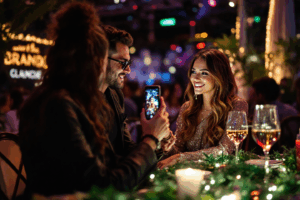 Macro-influencers, are those having followers ranging from 100,000 to 1 million, strike a balance between reach and relevance. They offer broader exposure and have established a level of credibility and influence that resonates with a wider audience. While their engagement rates might not match those of micro-influencers, macro-influencers are capable of significantly increasing brand awareness and driving campaigns that require a larger reach without the celebrity status price tag.
Macro-influencers, are those having followers ranging from 100,000 to 1 million, strike a balance between reach and relevance. They offer broader exposure and have established a level of credibility and influence that resonates with a wider audience. While their engagement rates might not match those of micro-influencers, macro-influencers are capable of significantly increasing brand awareness and driving campaigns that require a larger reach without the celebrity status price tag. Instagram caters to these diverse influencer strategies by offering a variety of content formats, each conducive to different styles of storytelling and engagement. Posts, the traditional images or videos shared on an influencer’s feed, provide a permanent fixture for brand collaborations, ideal for detailed storytelling or showcasing products.
Instagram caters to these diverse influencer strategies by offering a variety of content formats, each conducive to different styles of storytelling and engagement. Posts, the traditional images or videos shared on an influencer’s feed, provide a permanent fixture for brand collaborations, ideal for detailed storytelling or showcasing products.  Stories, temporary 24-hour content, offer a more casual and immediate way to engage audiences, perfect for behind-the-scenes looks, quick reviews, or flash promotions.
Stories, temporary 24-hour content, offer a more casual and immediate way to engage audiences, perfect for behind-the-scenes looks, quick reviews, or flash promotions.  In the vast expanse of Instagram, finding the right influencers for your brand is akin to searching for a needle in a haystack—challenging but entirely possible with the right strategies. This crucial step determines the effectiveness of your influencer marketing campaign, impacting everything from engagement rates to brand perception. The key lies in identifying influencers who not only have the reach but also align with your brand’s values, ethos, and target audience.
In the vast expanse of Instagram, finding the right influencers for your brand is akin to searching for a needle in a haystack—challenging but entirely possible with the right strategies. This crucial step determines the effectiveness of your influencer marketing campaign, impacting everything from engagement rates to brand perception. The key lies in identifying influencers who not only have the reach but also align with your brand’s values, ethos, and target audience.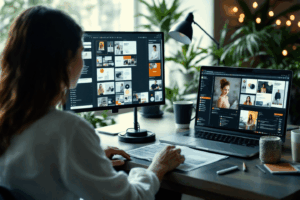



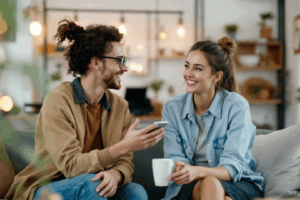

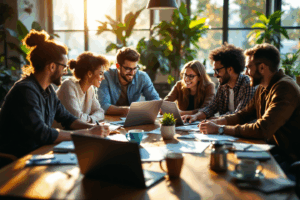 Defined Goals and Objectives
Defined Goals and Objectives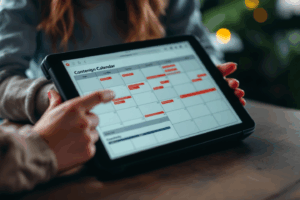 Expectations and Deliverables
Expectations and Deliverables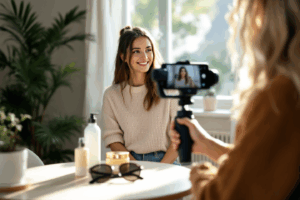 Creative Freedom
Creative Freedom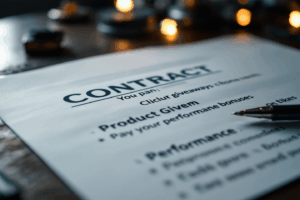 Compensation Structure
Compensation Structure A lifestyle brand partners with a travel influencer to promote its new line of sustainable travel accessories. By allowing the influencer to document their journey using the products in exotic locations, the brand leverages the influencer’s authentic storytelling and visual content to showcase the product’s versatility and eco-friendly attributes, leading to increased brand visibility and sales.
A lifestyle brand partners with a travel influencer to promote its new line of sustainable travel accessories. By allowing the influencer to document their journey using the products in exotic locations, the brand leverages the influencer’s authentic storytelling and visual content to showcase the product’s versatility and eco-friendly attributes, leading to increased brand visibility and sales. A beauty brand collaborates with a micro-influencer known for their honest product reviews and skincare tips. The influencer creates a series of posts and stories detailing their skincare routine incorporating the brand’s products, emphasizing their personal, positive experience. The authenticity of the influencer’s content generates high engagement and trust, driving traffic to the brand’s website and boosting product sales.
A beauty brand collaborates with a micro-influencer known for their honest product reviews and skincare tips. The influencer creates a series of posts and stories detailing their skincare routine incorporating the brand’s products, emphasizing their personal, positive experience. The authenticity of the influencer’s content generates high engagement and trust, driving traffic to the brand’s website and boosting product sales.


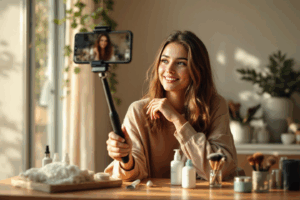


 As we look towards the horizon, the future of influencer marketing on Instagram promises evolution and innovation. The platform continues to introduce new features like augmented reality (AR) filters, shopping capabilities directly from posts and stories, and more immersive video formats, all of which will significantly shape influencer marketing strategies. We can anticipate a shift towards even more authentic, interactive content, with influencers and brands leveraging these tools to create deeper, more engaging experiences for users.
As we look towards the horizon, the future of influencer marketing on Instagram promises evolution and innovation. The platform continues to introduce new features like augmented reality (AR) filters, shopping capabilities directly from posts and stories, and more immersive video formats, all of which will significantly shape influencer marketing strategies. We can anticipate a shift towards even more authentic, interactive content, with influencers and brands leveraging these tools to create deeper, more engaging experiences for users.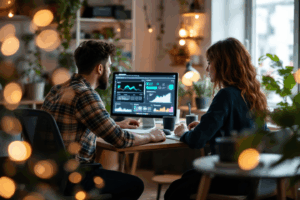 Moreover, the rise of micro and nano-influencers is set to continue, with brands recognizing the value of partnering with influencers who boast highly engaged, niche audiences. This shift underscores the importance of authenticity and relatability, principles that will remain at the core of successful influencer marketing.
Moreover, the rise of micro and nano-influencers is set to continue, with brands recognizing the value of partnering with influencers who boast highly engaged, niche audiences. This shift underscores the importance of authenticity and relatability, principles that will remain at the core of successful influencer marketing.
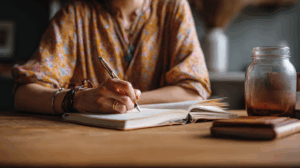

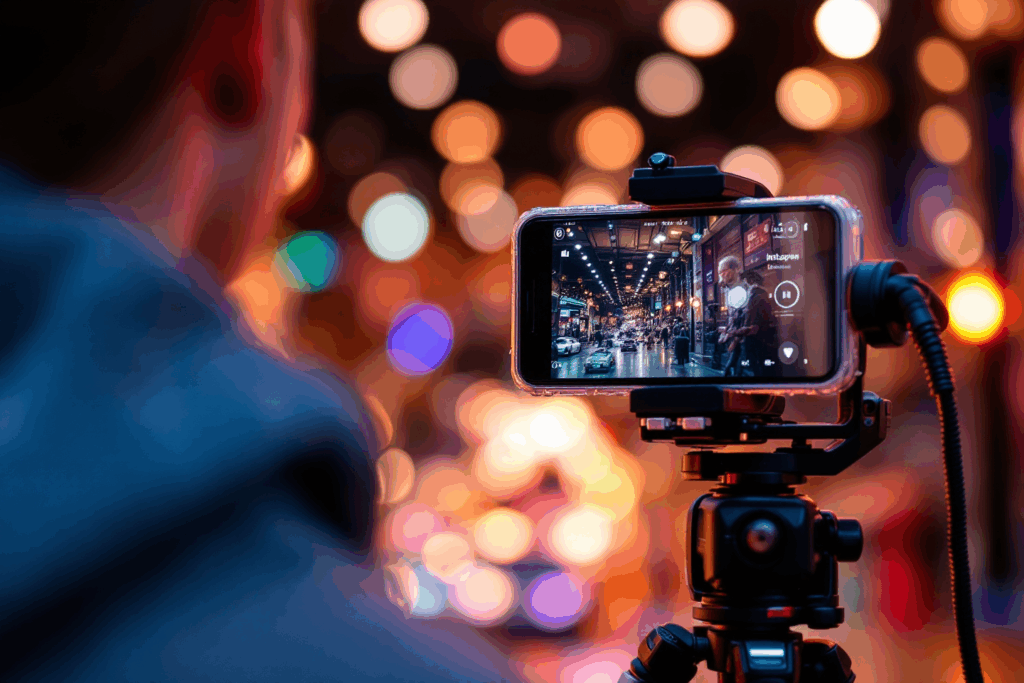
 In today’s fast-paced digital world, Instagram stands as a beacon for influencers, brands, and creators seeking to captivate and engage their audience. At the heart of Instagram’s vast array of features, Reels and Stories shine brightly, offering a dynamic platform for short-form video content. This blog dives deep into the transformative power of Instagram Reels and Stories, highlighting their unmatched potential to boost user engagement and expand reach across the globe.
In today’s fast-paced digital world, Instagram stands as a beacon for influencers, brands, and creators seeking to captivate and engage their audience. At the heart of Instagram’s vast array of features, Reels and Stories shine brightly, offering a dynamic platform for short-form video content. This blog dives deep into the transformative power of Instagram Reels and Stories, highlighting their unmatched potential to boost user engagement and expand reach across the globe. This journey through Instagram’s video content landscape is more than a guide; it’s an invitation to unlock the full potential of your digital presence. By understanding the core principles of engaging short-form video creation, leveraging the unique attributes of Reels and Stories, and implementing best practices for maximizing reach and engagement, readers will be equipped to elevate their Instagram game to new heights. Let’s embark on this adventure together, discovering the keys to success in the realm of Instagram Reels and Stories.
This journey through Instagram’s video content landscape is more than a guide; it’s an invitation to unlock the full potential of your digital presence. By understanding the core principles of engaging short-form video creation, leveraging the unique attributes of Reels and Stories, and implementing best practices for maximizing reach and engagement, readers will be equipped to elevate their Instagram game to new heights. Let’s embark on this adventure together, discovering the keys to success in the realm of Instagram Reels and Stories. Instagram Reels is a feature that allows users to create and share short-form videos, up to 60 seconds long, on their profiles, the Reels tab, and the Explore page. This functionality was introduced as Instagram’s answer to the rising popularity of short video content, especially in response to the global success of TikTok. Reels offer a plethora of editing tools including AR effects, speed controls, and the ability to align multiple clips for seamless transitions, providing a rich canvas for creativity and storytelling.
Instagram Reels is a feature that allows users to create and share short-form videos, up to 60 seconds long, on their profiles, the Reels tab, and the Explore page. This functionality was introduced as Instagram’s answer to the rising popularity of short video content, especially in response to the global success of TikTok. Reels offer a plethora of editing tools including AR effects, speed controls, and the ability to align multiple clips for seamless transitions, providing a rich canvas for creativity and storytelling. A key feature of Instagram Reels is its integration within the Instagram ecosystem, allowing users to reach their existing followers and the broader Instagram community through the Explore page. This contrasts with standalone platforms like TikTok, where content discovery is primarily feed-based. Reels also benefit from Instagram’s wide array of music and audio options, enabling creators to add a soundtrack from a vast library or use their own original audio.
A key feature of Instagram Reels is its integration within the Instagram ecosystem, allowing users to reach their existing followers and the broader Instagram community through the Explore page. This contrasts with standalone platforms like TikTok, where content discovery is primarily feed-based. Reels also benefit from Instagram’s wide array of music and audio options, enabling creators to add a soundtrack from a vast library or use their own original audio. Comparatively, Reels focuses on enhancing the social media experience of existing Instagram users by offering an additional format for expression and engagement. Unlike TikTok, which was built specifically for short-form video content, Reels is part of a multifunctional platform, offering users a more integrated and versatile content creation experience. This strategic positioning leverages Instagram’s massive user base, providing a familiar environment for users to explore and create short-form videos.
Comparatively, Reels focuses on enhancing the social media experience of existing Instagram users by offering an additional format for expression and engagement. Unlike TikTok, which was built specifically for short-form video content, Reels is part of a multifunctional platform, offering users a more integrated and versatile content creation experience. This strategic positioning leverages Instagram’s massive user base, providing a familiar environment for users to explore and create short-form videos. Instagram Stories is a feature that enables users to post photos and videos that vanish after 24 hours, a concept first popularized by Snapchat. Since its introduction, Stories has become a staple of daily social media use, allowing for spontaneous, less polished content compared to the more curated posts typically found on users’ profiles. Key features of Stories include the ability to add text, stickers, polls, and other interactive elements, making it a highly engaging format for real-time communication and feedback from followers.
Instagram Stories is a feature that enables users to post photos and videos that vanish after 24 hours, a concept first popularized by Snapchat. Since its introduction, Stories has become a staple of daily social media use, allowing for spontaneous, less polished content compared to the more curated posts typically found on users’ profiles. Key features of Stories include the ability to add text, stickers, polls, and other interactive elements, making it a highly engaging format for real-time communication and feedback from followers. The ephemeral nature of Stories creates a sense of urgency and exclusivity, encouraging more frequent checking and interaction from viewers. This transient aspect significantly impacts viewer engagement, as content that is available for a limited time often feels more personal and immediate. Stories are particularly effective for sharing behind-the-scenes content, limited-time offers, or quick updates, fostering a closer connection between creators and their audiences.
The ephemeral nature of Stories creates a sense of urgency and exclusivity, encouraging more frequent checking and interaction from viewers. This transient aspect significantly impacts viewer engagement, as content that is available for a limited time often feels more personal and immediate. Stories are particularly effective for sharing behind-the-scenes content, limited-time offers, or quick updates, fostering a closer connection between creators and their audiences. Unlike Reels and other short-form video platforms that prioritize entertainment and discoverability, Instagram Stories emphasizes interaction and connectivity. It offers a unique blend of temporal content with interactive features, standing out as a tool for maintaining and deepening relationships with followers. By combining the fleeting nature of Stories with the broad reach and social connectivity of Instagram, this feature manages to capture the fleeting moments of everyday life, making them shareable and engaging in a way that complements the more enduring content shared through posts and Reels.
Unlike Reels and other short-form video platforms that prioritize entertainment and discoverability, Instagram Stories emphasizes interaction and connectivity. It offers a unique blend of temporal content with interactive features, standing out as a tool for maintaining and deepening relationships with followers. By combining the fleeting nature of Stories with the broad reach and social connectivity of Instagram, this feature manages to capture the fleeting moments of everyday life, making them shareable and engaging in a way that complements the more enduring content shared through posts and Reels.

 Share the process behind your art, business, or daily routine. These glimpses into your world build authenticity and connect with viewers on a personal level.
Share the process behind your art, business, or daily routine. These glimpses into your world build authenticity and connect with viewers on a personal level. Use Reels to educate your audience on topics relevant to your niche. Whether it’s life hacks, cooking tips, or fitness advice, educational content adds value and encourages shares.
Use Reels to educate your audience on topics relevant to your niche. Whether it’s life hacks, cooking tips, or fitness advice, educational content adds value and encourages shares. Participate in or create your own challenges. These are inherently engaging and can quickly go viral, increasing your visibility.
Participate in or create your own challenges. These are inherently engaging and can quickly go viral, increasing your visibility. Show off your skills with transformation videos, whether it’s in fashion, makeup, home renovation, or art projects. These visually striking transformations are highly engaging.
Show off your skills with transformation videos, whether it’s in fashion, makeup, home renovation, or art projects. These visually striking transformations are highly engaging. Start your Reel with a compelling hook to grab attention. Keep your narrative concise and impactful, ensuring it fits within the short format without losing the essence of your message.
Start your Reel with a compelling hook to grab attention. Keep your narrative concise and impactful, ensuring it fits within the short format without losing the essence of your message. Interactive features like polls, questions, and quizzes invite your audience to participate directly in your content, increasing engagement and giving you valuable insights into your followers’ preferences.
Interactive features like polls, questions, and quizzes invite your audience to participate directly in your content, increasing engagement and giving you valuable insights into your followers’ preferences. Share snippets of your day to create a personal connection with your audience. The casual, spontaneous nature of Stories is ideal for vlogging.
Share snippets of your day to create a personal connection with your audience. The casual, spontaneous nature of Stories is ideal for vlogging.
 Short tutorials or step-by-step guides on Stories can provide immediate value to your audience, whether it’s a makeup tutorial, a cooking recipe, or a crafting project.
Short tutorials or step-by-step guides on Stories can provide immediate value to your audience, whether it’s a makeup tutorial, a cooking recipe, or a crafting project.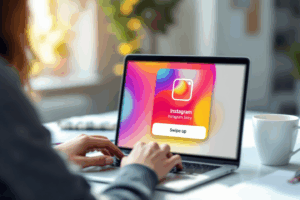



 Reels, with their ability to capture the essence of creativity and storytelling in bite-sized videos, have emerged as a crucial component for brands and creators looking to engage with audiences on a deeper level. Similarly, Stories offer a unique blend of immediacy and intimacy, providing a platform for daily interaction and audience engagement through their ephemeral nature. Together, they represent the forefront of digital engagement, combining the power of visual storytelling with the interactive features of social media.
Reels, with their ability to capture the essence of creativity and storytelling in bite-sized videos, have emerged as a crucial component for brands and creators looking to engage with audiences on a deeper level. Similarly, Stories offer a unique blend of immediacy and intimacy, providing a platform for daily interaction and audience engagement through their ephemeral nature. Together, they represent the forefront of digital engagement, combining the power of visual storytelling with the interactive features of social media. The journey through the landscapes of Reels and Stories underscores the importance of quality, creativity, and strategic timing in content creation. It also highlights the necessity of continually analyzing and adapting content strategies based on audience feedback and performance metrics, ensuring that every post contributes to building a stronger, more engaged community.
The journey through the landscapes of Reels and Stories underscores the importance of quality, creativity, and strategic timing in content creation. It also highlights the necessity of continually analyzing and adapting content strategies based on audience feedback and performance metrics, ensuring that every post contributes to building a stronger, more engaged community.




 Understanding and mastering these three areas can seem daunting, especially as search engines continually update their algorithms. However, the effort is well worth it. A solid SEO strategy can lead to sustained organic growth, reducing reliance on paid advertising and building a loyal audience base.
Understanding and mastering these three areas can seem daunting, especially as search engines continually update their algorithms. However, the effort is well worth it. A solid SEO strategy can lead to sustained organic growth, reducing reliance on paid advertising and building a loyal audience base.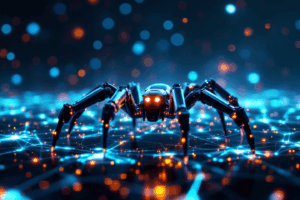 Imagine search engines as explorers navigating the vast territories of the internet. They use “crawlers” (also known as spiders or bots) to discover content, from web pages, images, and videos, to PDF files, across the web. These crawlers start from a known set of web addresses, follow links on those pages to other pages, and so on, constantly discovering new content. This process allows search engines to find new and updated content to add to their indexes.
Imagine search engines as explorers navigating the vast territories of the internet. They use “crawlers” (also known as spiders or bots) to discover content, from web pages, images, and videos, to PDF files, across the web. These crawlers start from a known set of web addresses, follow links on those pages to other pages, and so on, constantly discovering new content. This process allows search engines to find new and updated content to add to their indexes. After discovering content, search engines need to understand and organize it. This is where indexing comes in. Indexing involves analyzing the content of a page and storing it in a vast database. Think of it as a library catalog where every book (in this case, a web page) is categorized based on its content, use of keywords, and even images and videos. This organization makes it possible for the search engine to quickly retrieve relevant information during a search query.
After discovering content, search engines need to understand and organize it. This is where indexing comes in. Indexing involves analyzing the content of a page and storing it in a vast database. Think of it as a library catalog where every book (in this case, a web page) is categorized based on its content, use of keywords, and even images and videos. This organization makes it possible for the search engine to quickly retrieve relevant information during a search query. The final step in the search process is perhaps the most complex: ranking. When you type a question or keywords into a search bar, it sifts through its index to find the most relevant, high-quality results. This decision is based on hundreds of clues, like how well the content matches your search to the search query, the page’s authority, the user experience on the website, and many more. The goal is to provide users with the best possible answers to their questions at the top of the search results page.
The final step in the search process is perhaps the most complex: ranking. When you type a question or keywords into a search bar, it sifts through its index to find the most relevant, high-quality results. This decision is based on hundreds of clues, like how well the content matches your search to the search query, the page’s authority, the user experience on the website, and many more. The goal is to provide users with the best possible answers to their questions at the top of the search results page.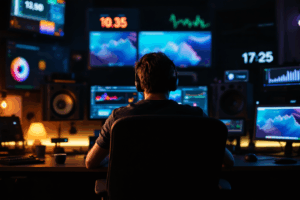 Search engines are constantly evolving; they are constantly evolving. The rise of mobile internet usage, voice search, and artificial intelligence are just a few factors driving significant changes in how search engines operate. For SEO professionals, staying informed about these changes and adapting strategies accordingly is crucial for success.
Search engines are constantly evolving; they are constantly evolving. The rise of mobile internet usage, voice search, and artificial intelligence are just a few factors driving significant changes in how search engines operate. For SEO professionals, staying informed about these changes and adapting strategies accordingly is crucial for success. Diving into the nitty-gritty of On-Page SEO, we uncover the essence of making your website not just search engine friendly, but also valuable and engaging for your visitors. On-page SEO is your control panel for influencing how search engines and users perceive your site. Let’s explore the critical components that can significantly boost your rankings and user engagement.
Diving into the nitty-gritty of On-Page SEO, we uncover the essence of making your website not just search engine friendly, but also valuable and engaging for your visitors. On-page SEO is your control panel for influencing how search engines and users perceive your site. Let’s explore the critical components that can significantly boost your rankings and user engagement. Your content must meet the needs and answer the questions of your target audience. Decoding what your audience is looking for and crafting content that delivers exactly that is paramount.
Your content must meet the needs and answer the questions of your target audience. Decoding what your audience is looking for and crafting content that delivers exactly that is paramount. Content should be easily digestible, with a clear structure, short paragraphs, and headings that guide the reader through your narrative. There are many tools that can help ensure your writing is clear and engaging.
Content should be easily digestible, with a clear structure, short paragraphs, and headings that guide the reader through your narrative. There are many tools that can help ensure your writing is clear and engaging. While stuffing your content with keywords is a bygone tactic, strategically placing relevant keywords in your content, especially in the first 100 words, helps search engines understand what your page is about.
While stuffing your content with keywords is a bygone tactic, strategically placing relevant keywords in your content, especially in the first 100 words, helps search engines understand what your page is about. The headline and snippet users see first: Title tags and meta descriptions interaction people have with your content on a search engine results page (SERP). These elements must be compelling and include main keywords to boost visibility.
The headline and snippet users see first: Title tags and meta descriptions interaction people have with your content on a search engine results page (SERP). These elements must be compelling and include main keywords to boost visibility. Internal linking is an authoritative tool for boosting page authority and helping visitors navigate your site. By linking to relevant, high-quality content within your site, you’re signaling to search engines the hierarchy and importance of your pages. Use descriptive anchor text that gives a clear indication of the linked content’s topic.
Internal linking is an authoritative tool for boosting page authority and helping visitors navigate your site. By linking to relevant, high-quality content within your site, you’re signaling to search engines the hierarchy and importance of your pages. Use descriptive anchor text that gives a clear indication of the linked content’s topic. In today’s fast-paced digital environment, site speed is more important than ever. Google has explicitly mentioned speed as a ranking factor for both desktop and mobile searches. A slow-loading site can increase bounce rates, remember, lightning-fast loading speeds are crucial to prevent visitors from bouncing due to impatience. Tools like Google’s PageSpeed Insights can help identify issues and offer solutions to improve your site’s loading times. Optimizations can include compressing images, leveraging browser caching, and minimizing CSS and JavaScript files.
In today’s fast-paced digital environment, site speed is more important than ever. Google has explicitly mentioned speed as a ranking factor for both desktop and mobile searches. A slow-loading site can increase bounce rates, remember, lightning-fast loading speeds are crucial to prevent visitors from bouncing due to impatience. Tools like Google’s PageSpeed Insights can help identify issues and offer solutions to improve your site’s loading times. Optimizations can include compressing images, leveraging browser caching, and minimizing CSS and JavaScript files. Considering the rise of mobile internet users via mobile devices, mobile-friendliness has become a critical ranking factor. A mobile-friendly, responsive design ensures your site provides a flawless experience across all screen sizes, from desktops to mobile phones.
Considering the rise of mobile internet users via mobile devices, mobile-friendliness has become a critical ranking factor. A mobile-friendly, responsive design ensures your site provides a flawless experience across all screen sizes, from desktops to mobile phones. SSL keeps your website communication secure, like a secret handshake between you and your visitors, safeguarding personal information from being intercepted. Google has confirmed that using SSL (indicated by HTTPS in your site’s URL) is a ranking signal. Beyond SEO, SSL certification builds trust with your visitors, showing that you value their security. Transitioning your site to HTTPS is a straightforward process that can significantly impact your site’s credibility and SEO.
SSL keeps your website communication secure, like a secret handshake between you and your visitors, safeguarding personal information from being intercepted. Google has confirmed that using SSL (indicated by HTTPS in your site’s URL) is a ranking signal. Beyond SEO, SSL certification builds trust with your visitors, showing that you value their security. Transitioning your site to HTTPS is a straightforward process that can significantly impact your site’s credibility and SEO.
 Voice search has been gaining momentum, thanks to the proliferation of voice-activated assistants like Amazon’s Alexa, Apple’s Siri, and Google Assistant. This trend is reshaping keyword strategies, as voice searches tend to be more conversational and longer than text-based queries. People speak naturally to their devices, asking questions as they would to a human. This shift necessitates a move towards optimizing for long-tail keywords and question-based queries, ensuring content can effectively answer the types of questions people are asking aloud. The focus is on semantic search, understanding the intent behind queries, and providing precise, conversational answers that voice search devices can relay back to users.
Voice search has been gaining momentum, thanks to the proliferation of voice-activated assistants like Amazon’s Alexa, Apple’s Siri, and Google Assistant. This trend is reshaping keyword strategies, as voice searches tend to be more conversational and longer than text-based queries. People speak naturally to their devices, asking questions as they would to a human. This shift necessitates a move towards optimizing for long-tail keywords and question-based queries, ensuring content can effectively answer the types of questions people are asking aloud. The focus is on semantic search, understanding the intent behind queries, and providing precise, conversational answers that voice search devices can relay back to users. For businesses, especially those that incorporate a physical presence, local SEO has become indispensable. In optimizing for local search, involves making sure your business appears prominently in local search results and on platforms like Google My Business. It’s about being visible when a user searches for services or products “near me.” Local SEO strategies include optimizing for local keywords, securing listings in local business directories, and managing online reviews and ratings. As the world becomes more connected yet more localized in focus, local SEO helps businesses attract targeted, high-intent traffic, offering opportunities to convert online searches into offline sales.
For businesses, especially those that incorporate a physical presence, local SEO has become indispensable. In optimizing for local search, involves making sure your business appears prominently in local search results and on platforms like Google My Business. It’s about being visible when a user searches for services or products “near me.” Local SEO strategies include optimizing for local keywords, securing listings in local business directories, and managing online reviews and ratings. As the world becomes more connected yet more localized in focus, local SEO helps businesses attract targeted, high-intent traffic, offering opportunities to convert online searches into offline sales.
 Now, let’s talk about backlinks, or also called inbound links. Backlinks are those links from other websites that lead back to your site. They are among the cornerstone elements of SEO, acting as votes of confidence from one site to another. The logic is straightforward: if multiple reputable sites link back to your content, the search engines will interpret this as a signal that your content is valuable, credible, and authoritative, which can significantly boost your rankings. However, always keep in mind that not every backlink is made equal. Factors like the quality of the linking site, the relevance of the content between the two sites, and the way the link is structured (e.g., using relevant anchor text) play crucial roles in the value of a backlink.
Now, let’s talk about backlinks, or also called inbound links. Backlinks are those links from other websites that lead back to your site. They are among the cornerstone elements of SEO, acting as votes of confidence from one site to another. The logic is straightforward: if multiple reputable sites link back to your content, the search engines will interpret this as a signal that your content is valuable, credible, and authoritative, which can significantly boost your rankings. However, always keep in mind that not every backlink is made equal. Factors like the quality of the linking site, the relevance of the content between the two sites, and the way the link is structured (e.g., using relevant anchor text) play crucial roles in the value of a backlink. Writing articles for reputable sites in your industry not only positions you as an authority but also allows you to secure backlinks to your site.
Writing articles for reputable sites in your industry not only positions you as an authority but also allows you to secure backlinks to your site. Infographics, comprehensive guides, and original research are types of content that naturally encourage sharing and linking.
Infographics, comprehensive guides, and original research are types of content that naturally encourage sharing and linking. Identify broken links on external websites and offer your content as a replacement, providing value to the site owner and securing a backlink.
Identify broken links on external websites and offer your content as a replacement, providing value to the site owner and securing a backlink. Sometimes, the direct approach works best. Reach out to websites that mention your brand or could benefit from your resources and ask for a link.
Sometimes, the direct approach works best. Reach out to websites that mention your brand or could benefit from your resources and ask for a link.
 The landscape of SEO is ever-evolving, driven by technological advancements and changing user behaviors. The rise of voice search, the importance of local SEO, and the promising future of Artificial Intelligence and machine learning are just the tip of the iceberg. As SEO professionals, embracing these trends and continuously adapting our strategies is crucial for staying ahead. The future of SEO is not just about optimizing for search engines but about creating valuable, relevant, and accessible content that meets the evolving needs and expectations of users. By keeping our fingers on the pulse of these trends and being willing to innovate, we can go through the future of SEO with confidence and success.
The landscape of SEO is ever-evolving, driven by technological advancements and changing user behaviors. The rise of voice search, the importance of local SEO, and the promising future of Artificial Intelligence and machine learning are just the tip of the iceberg. As SEO professionals, embracing these trends and continuously adapting our strategies is crucial for staying ahead. The future of SEO is not just about optimizing for search engines but about creating valuable, relevant, and accessible content that meets the evolving needs and expectations of users. By keeping our fingers on the pulse of these trends and being willing to innovate, we can go through the future of SEO with confidence and success. This deep dive into the future of SEO and its trends underscores the importance of adaptability and forward-thinking in maintaining and enhancing online visibility. As we wrap up this exploration, remember that the main step to success in SEO is not just in responding to the present but in anticipating the future.
This deep dive into the future of SEO and its trends underscores the importance of adaptability and forward-thinking in maintaining and enhancing online visibility. As we wrap up this exploration, remember that the main step to success in SEO is not just in responding to the present but in anticipating the future. Exploration into the vast world of SEO, it’s clear that a balanced approach, incorporating both on-page and off-page strategies, alongside staying abreast of technical SEO developments and future trends, is key to achieving and maintaining search engine success.
Exploration into the vast world of SEO, it’s clear that a balanced approach, incorporating both on-page and off-page strategies, alongside staying abreast of technical SEO developments and future trends, is key to achieving and maintaining search engine success.










 SEO (Search Engine Optimization) is like crafting a series of signposts that guide people to your story. It involves carefully selecting the words (keywords) that people are likely to use when searching for topics related to your story or product. For example, if you’ve written a guide on how to grow indoor plants, you’d want to include phrases like “indoor gardening tips” or “best plants for indoors” on your website. But it’s not just about keywords; making your site user-friendly, with fast loading times and mobile compatibility, also plays a huge part in SEO. It’s a long-term strategy that, when done right, builds your visibility over time, attracting a steady stream of visitors to your site organically.
SEO (Search Engine Optimization) is like crafting a series of signposts that guide people to your story. It involves carefully selecting the words (keywords) that people are likely to use when searching for topics related to your story or product. For example, if you’ve written a guide on how to grow indoor plants, you’d want to include phrases like “indoor gardening tips” or “best plants for indoors” on your website. But it’s not just about keywords; making your site user-friendly, with fast loading times and mobile compatibility, also plays a huge part in SEO. It’s a long-term strategy that, when done right, builds your visibility over time, attracting a steady stream of visitors to your site organically. SEM (Search Engine Marketing), on the other hand, is like renting a giant billboard on the busiest highway in town. You pay for a prime spot in search engine results, ensuring that your story or product is one of the first things people see when they’re searching for related topics. This method is especially useful for announcements, promotions, or when you’re entering a new market and need immediate exposure. It’s a quick, targeted way to boost your visibility and direct traffic to your site, complementing your SEO efforts.
SEM (Search Engine Marketing), on the other hand, is like renting a giant billboard on the busiest highway in town. You pay for a prime spot in search engine results, ensuring that your story or product is one of the first things people see when they’re searching for related topics. This method is especially useful for announcements, promotions, or when you’re entering a new market and need immediate exposure. It’s a quick, targeted way to boost your visibility and direct traffic to your site, complementing your SEO efforts. Both SEO and SEM are crucial for building your online presence. SEO lays the groundwork for sustained growth, helping you climb the ranks in search results over time, while SEM gives you a quick visibility boost when you need it most. Together, they ensure that whether people are leisurely browsing or actively searching, your story gets the audience it deserves.
Both SEO and SEM are crucial for building your online presence. SEO lays the groundwork for sustained growth, helping you climb the ranks in search results over time, while SEM gives you a quick visibility boost when you need it most. Together, they ensure that whether people are leisurely browsing or actively searching, your story gets the audience it deserves. Social media is your digital megaphone and listening device, all rolled into one. It’s a dynamic space where you can showcase what makes your business or personal brand unique and tune into the feedback and interests of your audience. The key to making the most of this space lies not just in what you say, but also in where and how you engage your audience.
Social media is your digital megaphone and listening device, all rolled into one. It’s a dynamic space where you can showcase what makes your business or personal brand unique and tune into the feedback and interests of your audience. The key to making the most of this space lies not just in what you say, but also in where and how you engage your audience. Choosing the right platform is crucial. Imagine social media platforms as different types of gatherings. Instagram and Facebook are like casual meetups where visuals take center stage, perfect for sharing behind-the-scenes looks, stories, and photos that highlight your brand’s personality and values. LinkedIn is the industry conference room, ideal for sharing your professional achievements, and insights, and connecting with industry peers. Twitter acts as the bustling city square, where news breaks, trends emerge, and conversations happen in real-time. Each platform serves a unique purpose in your social media strategy, catering to different aspects of your professional persona and audience.
Choosing the right platform is crucial. Imagine social media platforms as different types of gatherings. Instagram and Facebook are like casual meetups where visuals take center stage, perfect for sharing behind-the-scenes looks, stories, and photos that highlight your brand’s personality and values. LinkedIn is the industry conference room, ideal for sharing your professional achievements, and insights, and connecting with industry peers. Twitter acts as the bustling city square, where news breaks, trends emerge, and conversations happen in real-time. Each platform serves a unique purpose in your social media strategy, catering to different aspects of your professional persona and audience. The magic of social media lies in interaction. It’s not just about broadcasting your message but engaging in a two-way conversation. Encourage this dialogue by asking your followers questions, creating polls, and responding to comments and messages. Share interesting facts, tips, and insights related to your field to position yourself as a go-to resource. Visual content, like photos and videos, is crucial for grabbing interest and getting your message across message more effectively.
The magic of social media lies in interaction. It’s not just about broadcasting your message but engaging in a two-way conversation. Encourage this dialogue by asking your followers questions, creating polls, and responding to comments and messages. Share interesting facts, tips, and insights related to your field to position yourself as a go-to resource. Visual content, like photos and videos, is crucial for grabbing interest and getting your message across message more effectively. In the digital marketing world, analytics act like your personal detective, uncovering the mysteries of what your audience loves, interacts with, or glosses over. It’s akin to having a feedback loop at every party you host, knowing exactly which dishes were hits and which were misses. Analytics tools dig into the depths of your online activities, from social media posts to email campaigns, providing a clear picture of your successes and areas for improvement.
In the digital marketing world, analytics act like your personal detective, uncovering the mysteries of what your audience loves, interacts with, or glosses over. It’s akin to having a feedback loop at every party you host, knowing exactly which dishes were hits and which were misses. Analytics tools dig into the depths of your online activities, from social media posts to email campaigns, providing a clear picture of your successes and areas for improvement.

 Getting good at digital marketing is like learning to host the best parties. You need great stories
Getting good at digital marketing is like learning to host the best parties. You need great stories 